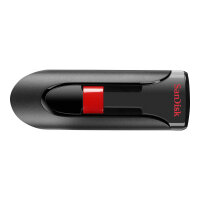32GB SanDisk USB Sticks at The SanDisk Store
|
More About USB Sticks
| USB Capacity Chart | ||||||||
 |
 |
 |
 |
 |
||||
USB Capacity |
Photos |
Songs |
Documents |
Videos |
||||
2GB |
650 |
500 |
1800 |
30 mins |
||||
4GB |
1300 |
1000 |
3600 |
60 mins |
||||
8GB |
2600 |
2000 |
7200 |
2 hours |
||||
16GB |
5200 |
4000 |
14500 |
4 hours |
||||
| Approx. based on typical file sizes | ||||||||
USB sticks are useful devices that will hold a large amount of data. Memory sticks are generally used to save data files including documents, photos, music, videos etc. By plugging your memory stick into a USB port you can save a large amount of data for future use. The amount you can save depends on the size of the USB stick. At HuntOffice.co.uk we have a range of USB memory sticks to choose from including 2GB, 4GB, 8GB, 16GB and 32GB.
The main manufacturer we supply is Imation and Verbatim however we also supply Integral, Silicon Power, TDK and Dane-Elec.
Memory sticks are used by home users, offices and students. The following are some advantages of using a USB stick.
• Many USB sticks come with a slot for attaching to a keyring which makes them easy to carry around
• You can transfer data easily between pcs
• USB sticks are very convenient if you work on particular data on different pcs i.e. school and home
When buying a USB stick you may come across large amounts of specifications which can be confusing. Below is a list of specifications you may come across:
• Capacity – One of the most important factors when purchasing a USB stick, capacity refers to how much data can be stored on the memory stick i.e. 2GB, 4GB, 8GB, 32GB etc.
• Plug and play – with plug and play you only need to insert the USB stick into the USB port and your pc will automatically detect and configure the memory stick without the need for manual configuration.
• Write Speed – The write speed means how fast data can be stored on your USB stick under normal conditions. The larger the write speed the better.
• Read Speed – The read speed means how fast data can be read on your USB stick under normal conditions. The larger the read speed the better.
• USB 1.1, USB 2.0 and USB 3.0 – These refer to the versions released for the standards of USB computer connectivity. USB 3.0 would be the most recent version. The main improvements in USB 3.0 include improved transfer speed with transmission speeds of up to 5 Gbit/s (up to 10 times faster) and more bandwidth so it can receive and transfer data at the same time.
To achieve USB 3.0 results, in addition to your memory stick being USB3.0, your pc needs to have a USB3.0 port. Most USB3.0 devices are backward compatible which means they can be used in a USB1.1 or USB2.0 port however you will only experience the results of USB1.1 or USB2.0
• Password protected – Many memory sticks offer password protection and data encryption to protect your data.


















